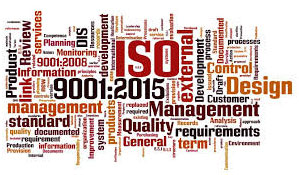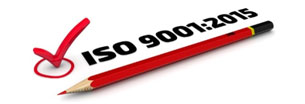What is ISO 9001?

ISO 9001 is the international standard that specifies requirements for a quality management system (QMS).
Organizations use the standard to demonstrate the ability to consistency provide products and services that meet customer and regulatory requirements. It is the most popular standard in the ISO 9000 series and the only standard in the series to which organizations can certify.
ISO 9001 was first published in 1987 by the International Organization for Standardization (ISO), an international agency composed of the national standards bodies of more than 160 countries. The most current version of ISO 9001 was released in September 2015.
Business benefits enjoyed by the ISO 9001 organizations included higher rates of survival and growth, increased wages, reduced waste, enhanced productivity, and improved health and safety performance.
If your business has adopted ISO9001 then it’s essential that you understand what these changes mean for you.

Why is ISO9001 being revised and what should you do!
The latest update to ISO 9001 is the first since ISO 9001:2008. But it is really the first major revision since ISO 9001:2000, which essentially consolidated three previous standards including ISO 9001, ISO 9002 and ISO 9003.
The latest revision takes into account the vast changes in technology, business diversity and global commerce (which the ISO 9000 family and its spin-offs were created to support), including:
- The growth of service businesses and their needs for quality management
- Recognition of the need to harmonize, integrate quality management into overall business management systems, perhaps to serve as the basis of business management itself
- Making it easier for companies to adopt multiple ISO series general business management standards such as ISO 14001 (environmental), ISO 18001 Health and Safety and/or vertical standards such as AS9100
- Helping to simplify the understanding of the standard, and make it easier (and more mandatory) to apply it more uniformly
The new ISO 9001 standard also aligns with high level organizational structure, requiring all new ISO management system standards to be aligned on a high-level structure with a set of common requirements. Additionally, there is a greater emphasis on risk-based thinking as a basis for the management system, more focus on achieving value for the company and its customers, increased flexibility regarding use of documentation, and a more approachable structure for service businesses.
The chart below illustrates some of the key differences between ISO 9001:2015 and the current ISO 9001:2008
|
Structure Comparison Chart |
|
|
ISO 9001:2015 |
ISO 9001:2008 |
|
1. Scope |
1. Scope |
|
2. Nominative References |
2. Nominative References |
|
3. Terms and definitions |
3. Terms and definitions |
|
4. Context of the organization |
4.Quality Management System |
|
5. Leadership |
5.Management responsibility |
|
6. Planning |
6.Resource management |
|
7. Support |
7.Product realization |
|
8. Operation |
8.Measurement, analysis, and improvement |
|
9. Performance evaluation |
|
|
10. Improvement |
|
How can we help you

Whether you are beginning your ISO 9001 journey or transitioning to the 2015 revision, your first step should be to contact Brunel Management Services for advice on how the update will affect you and your business and how new the new changes can be implemented. Organizations and individuals that use ISO 9001 are encouraged to transition to the 2015 revision as soon as possible.
Brunel Management Services is providing training programmes on how to prepare and implement the revised requirements in line with the timelines for continued accredited certification.
Please contact a Health & Safety Consultant with any questions.
